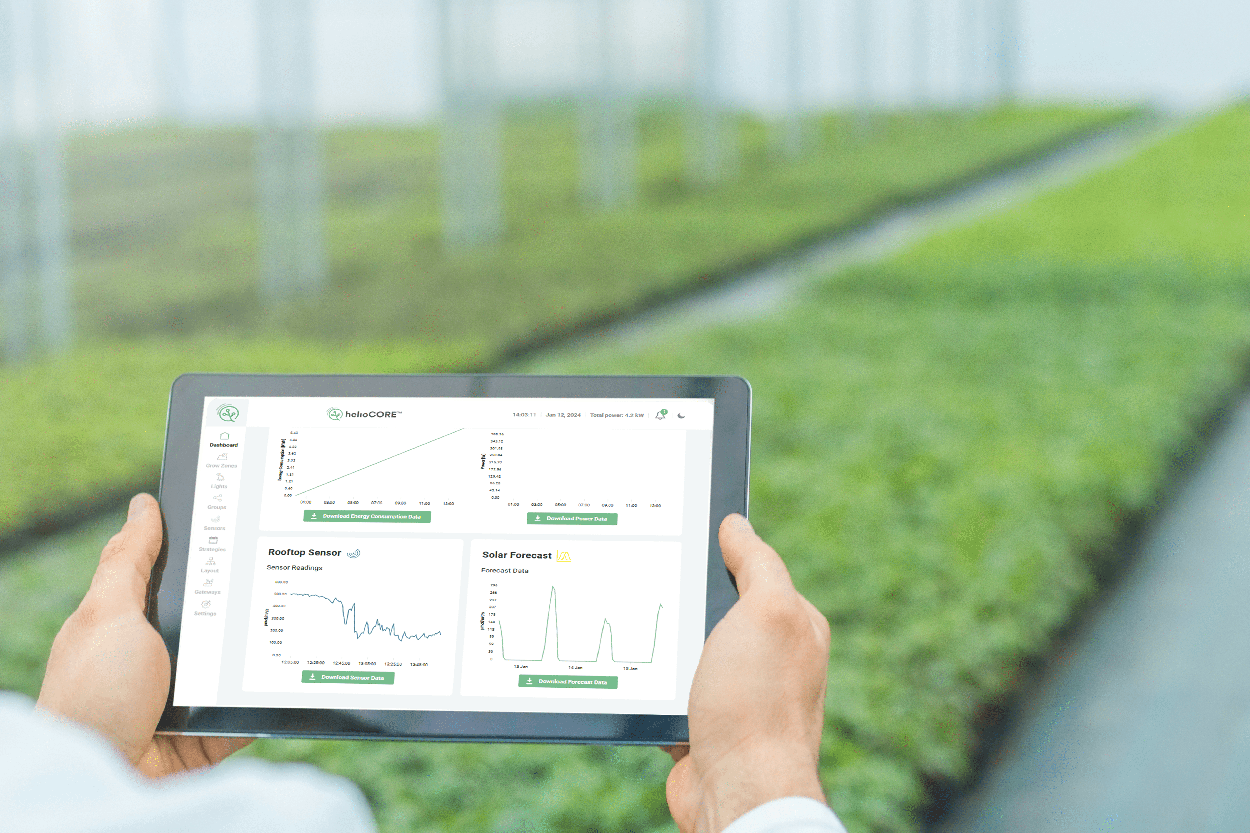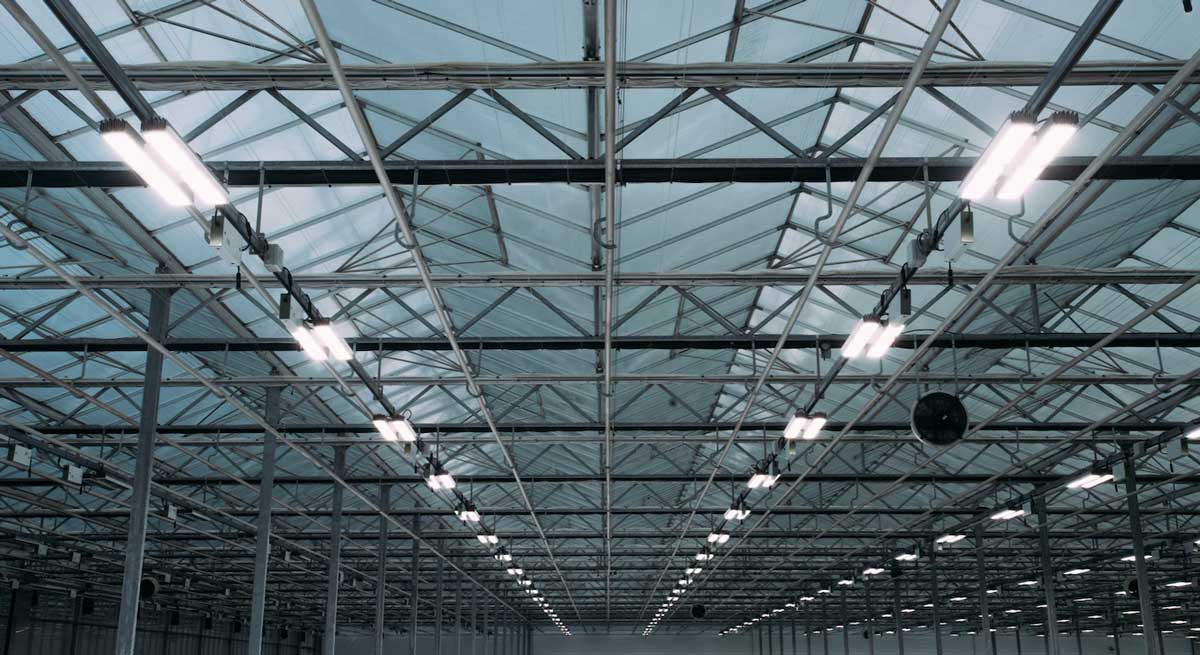Research
Articles
Choosing the best LED grow lights for your facility is essential to growing healthy plants and getting a maximum return from your investment.
But purchasers of horticultural lights often encounter a major challenge, comprehending the numerous terms and metrics used to measure and describe the light emitted by these systems. This makes researching horticultural lighting a complex task.
When researching about light spectrum and plant lighting efficacy you have probably come across Lumens, PAR, PPF, PPFD, and PPE.
Below is a list and explanation of the most common terms used:
Lumens
Plants and humans do not perceive light in the same way. The human eye perceives green light as the brightest, whereas plants primarily use blue and red light. A Lumen is a unit of luminous flux that relates to the brightness of light visible to the human eye. Luminous flux is calculated by weighting (multiplying) the spectral distribution of a quantity of visible light by values representing human eye sensitivity to particular wavelengths. For this reason, a light source having a high lumen value may not always be suitable for growing plants. Lumens are related to lux in that one lux is one lumen per square meter.
PAR
(Photosynthetically Active Radiation) is a region of the light spectrum (400 to 700 nm) that plants utilize for the process of photosynthesis. PAR is not a measurement or metric but defines the range of light needed to support photosynthesis.

Plant and human response to light
PPF
(Photosynthetic Photon Flux) is a measure of the total amount of light within PAR that a light source emits each second. The unit used to express PPF is micromoles of photons per second (µmol/s).
PPF is an important metric for calculating how efficient a lamp is at converting electrical energy into photons of PAR. Nonetheless, it is of essence to note that PPF does not tell you how much of the measured light actually arrives at the plant canopy. PPF measurements used to describe light sources should be done in specialized light laboratories using appropriate equipment such as light sensors connected to integrating spheres or goniometers. One recommended way is to use a light company that uses third-party testing.
PPFD
(Photosynthetic Photon Flux Density) measures the amount of light within PAR that actually falls on a given surface (the plant canopy area) each second. The unit used to express PPFD is micromoles of photons per square meter per second (µmol/m2/s). This measurement is done using a specialized instrument called PAR Light Meter or a properly calibrated spectrometer, which captures, and measures photons emitted by a light source.
It is important for growers using LED grow lights to use the right measurement instruments as there are some that are not truly compatible with LEDs and could give a false PAR range. This is because some sensors are calibrated to measure luminous power or do not capture the full red in LED light.
PPE
(Photosynthetic Photon Efficacy) is the PAR photon output of a light source (measured in micromoles per second or µmol/s) divided by the input power (Watt) to produce that light.
PPE does not include the photons outside the PAR range. Wavelengths outside of the PAR range like far-red (FR) have proven to have a positive effect on growth and steer morphological responses of plants. The efficacy of light containing FR is lower than the efficacy of light sources emitting only blue and red light when measured as PAR photons per wall-plug energy consumption, even if they may give better results in plant biomass production and healthy growth.
If you want to learn more about the benefits and results of Far-Red, check out our free eBook here: Understanding the impact of Far-Red
Measuring and interpreting the total output of a lamp is a tricky thing. It is important to understand that light follows some simple geometrical rules. The PPFD decreases with the distance from a lamp while the footprint increases, so it is important to consider the size of the illuminated area (light footprint) and how uniform the light distribution is over this area. You should always request a light plan for your grow facility before purchasing lights.
Many LED lights are not equipped with optics designed to distribute light uniformly. Measuring the output of lights at a single point can produce false information about its actual output. Therefore, it is advisable to measure light intensity at many points of an illuminated area.
Since you are evaluating grow lights and light spectrum on plants, you want to make sure that the lighting manufacturers you are working with are knowledgeable on horticultural grow lighting and can provide you adequate information about light output, efficacy, spectral quality, and uniformity in units that are relevant for plants. You can find Heliospectra’s light characteristics and metrics listed on our product specification sheets.
The metrics we have discussed above focus on photons output but not light quality and efficiency of plant production. It is important that you also consider the light requirements or light needs of your specific crop. You want your lamps to deliver photons that are efficiently absorbed by your plants and enable them to grow well and achieve your desired quality.
Contact us by filling out the form below and let us help you choose the best LED grow lights for your facility!
Related content
DLI Controller – helioCORE User Interface
Uncover light optimization, DLI targeting, and yield maximization strategies!
Get in touch with us!
From custom light planning, to tailored quotes, and everything in between,
our team of horticulture experts are always ready to assist.





